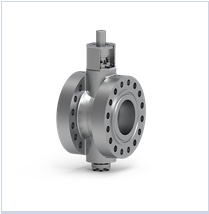Question
-
What is the basis for maintaining minimum wetting rates in vacuum column (whether based on vacuum charge or design condition?) What will happen if minimum wetting rates are not adhering to?
Apr-2023
Answers
-
N Sekar Murthy, Ashphil Consultancy, nssvdvr@gmail.com
Interesting question for process reliability. We have seen the need for both wetting velocity and C factor to be adhered within prescribed window while moving from trays to packing in slop wax zone (just above the flash zone) in reduced crude oil distillation under considerable vacuum o deep cut operation. As entrainments are likely despite the best feed entry device (vapour horn or Schoepentoeter), there is need to stay within the limits of these two parameters. There are several refiners who went in for structured packing only to fail and moved to open grid type packing which allows better tolerance to hostile conditions above flash zone. In short, stay within the integrity operating window on both C Factor (basically to be below max value) and Wetting velocity (operate above minimum set) for reliable and lasting operation of vac towers. Incidentally, the calculation of wetting velocity needs distillation data (ASTM D 1160) of slop wax. Hence, the bottom line - strictly honour these two parameters. Good luck.
Jun-2023
-
Eric Lin, Norton Engineering Consultants Inc., elin@nortonengr.com
Minimum wetting rates are normally set by the packing vendor and should be exceeded by design. If for some odd reason the design flows are not enough to satisfy the minimum wetting rate set by the vendor, then maldistribution and possible channeling can occur (flow always follows the path of least resistance). Unwetted areas will have pure vapor bypass, leading to loss of component stripping and fractionation for that particular zone.
Since we are addressing a vacuum column, then it will most likely be structured packing and not random packing. Structured packing typically does exhibit lower wetting rates than random packing. However, the aforementioned min wetting rates should be adhered to as vendors know where the drip points are and know their packing the best!
May-2023
-
Marcio Wagner da Silva, Petrobras, marciows@petrobras.com.br
The response for this question depends on a several parameters like the characteristics of the column internals as well as the mixture which will be separated.
Considering that we are dealing with a vacuum column, there is a great chance that the equipment is operating with packing internals which presents lower pressure drop than the perforated plates. There is a several correlations in the literature capable to give an estimative for the minimum wetting rate of a separation column which relies on the characteristics of the fluids like viscosity, density, and temperature and the characteristics of the packing like applied material, if is stacked or random, geometric form, atc.
An wetting rate below of the minimum will not conduct adequate mass and heat transfer rates, leading to poor performance of the separation column. In services with high temperature with hydrocarbons the low wetting rate can lead to premature coking deposition in the separation section leading a poor fractionating performance, high pressure drop and shorter operating lifecycle.
May-2023

















